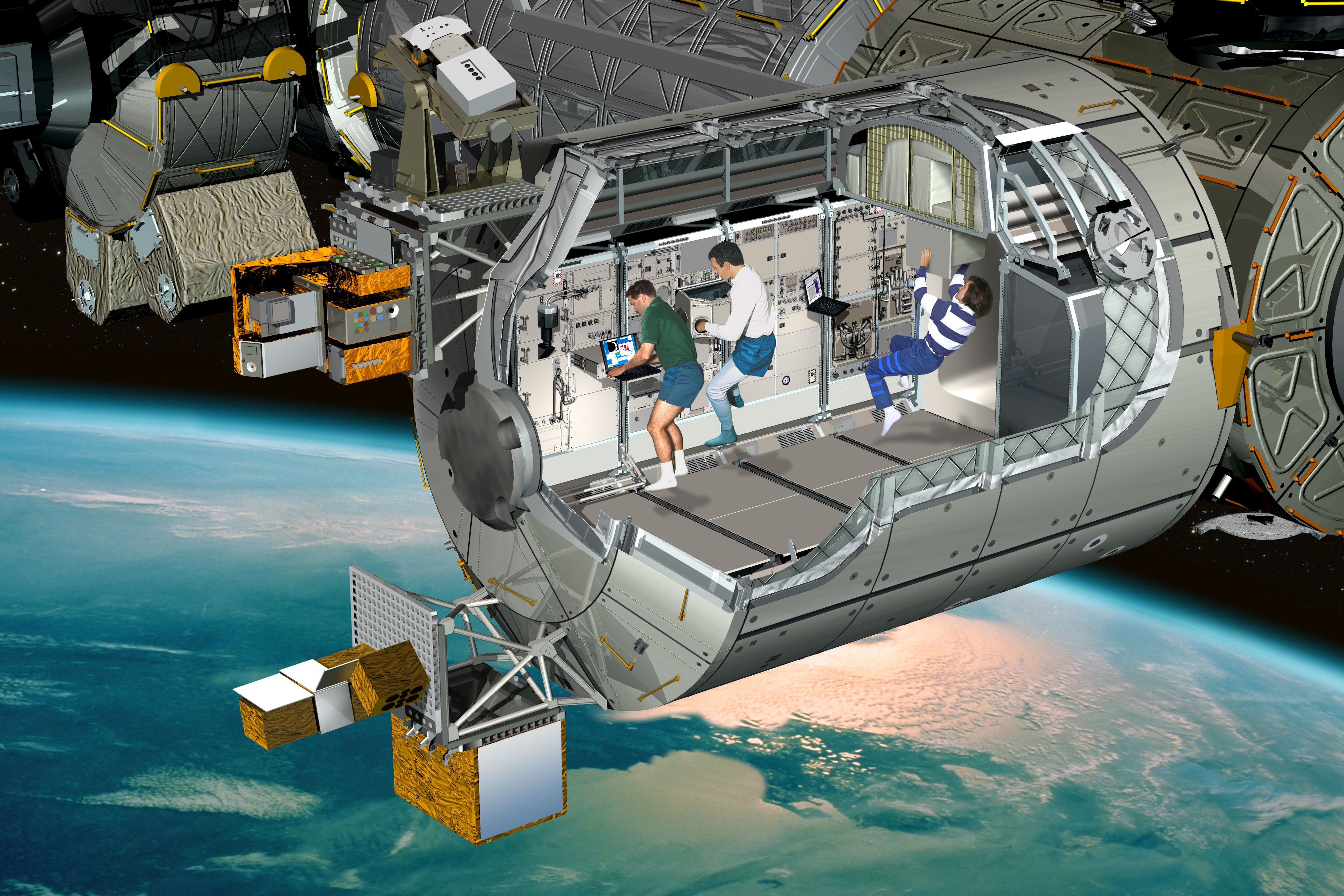Happy 10th birthday, Columbus laboratory!
01 March 2018
10 years ago the Columbus laboratory was sent into space onboard the Space Shuttle Atlantis! It was attached to the International Space Station, becoming Europe’s first permanent human outpost in orbit.
The Columbus laboratory is named after the famous Italian explorer Christopher Columbus. Between 1492 and 1503 he completed four trips from Spain to America and back again in sailing ships, which was a very impressive achievement at the time. This spirit of adventure and exploration makes the name a good fit!
Our modern-day Columbus is a high-tech laboratory in space. It allows scientists to perform experiments in weightless conditions, and to make amazing new discoveries! Inside Columbus is space for 10 “payload racks” – mini-laboratories about the size of a refrigerator, each one designed for a different set of experiments. ESA runs five of these:
- Biolab, examining tiny organisms, cells, small plants, and insects.
- The European Physiology Modules Facility, investigating how being weightless affects the human body.
- The Fluid Science Laboratory, looking into the strange behaviour of liquids in space.
- The European Drawer Rack, which allows for new experiments to easily be swapped in.
- The European Transport Carrier, which is useful for storing equipment. It is also a workbench!
There are even two experiment areas on the outside of Columbus, and so directly exposed to space. One of these allows researchers to study how different materials change when in space, while the other is dedicated to investigating the Sun.
The Columbus laboratory needs lots of people on Earth to help support it and keep everything running smoothly. They work at ESA's Columbus Control Centre, nicknamed 'Col-CC'. It is located at the German Aerospace Center DLR in Oberpfaffenhofen, near Munich, Germany.
Working in shifts, Col-CC staff support Columbus 24 hours a day, seven days a week! They make sure that the life support systems are working properly, the air that astronauts are breathing is clean, there is power to all the experiments, nothing overheats… and much more!
Imagine you could have an experiment onboard Columbus. What would it be, and what would you hope to find out?
Cool fact: Over the last 10 years more than 225 experiments have been conducted onboard Columbus!







